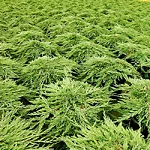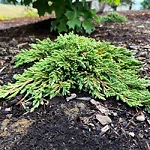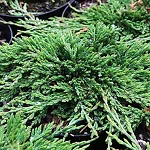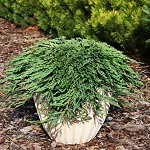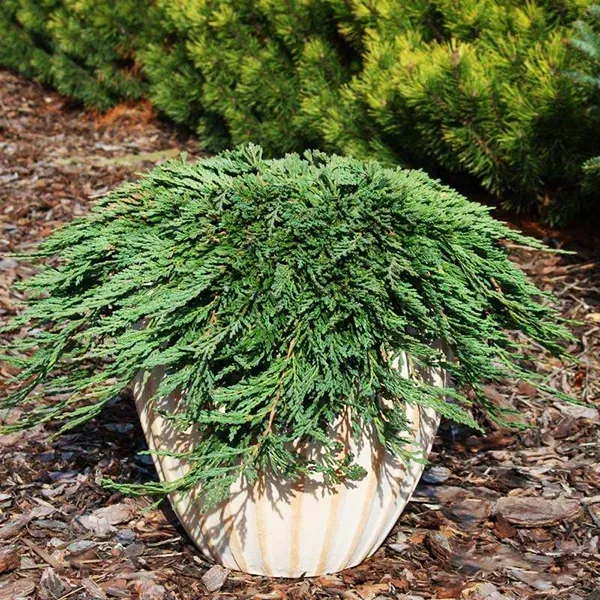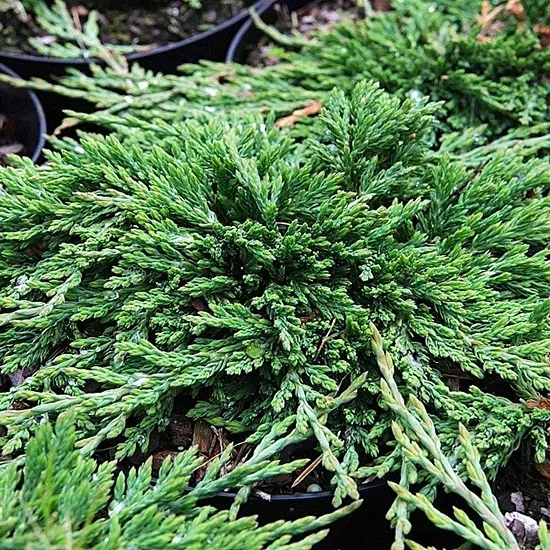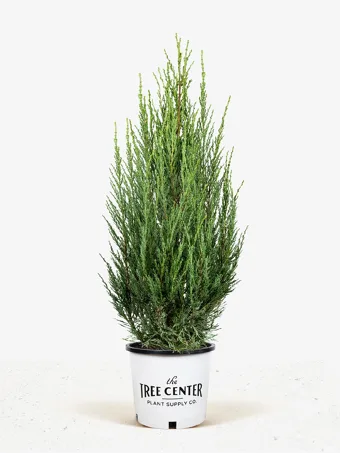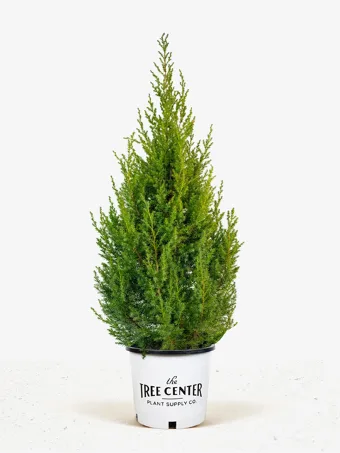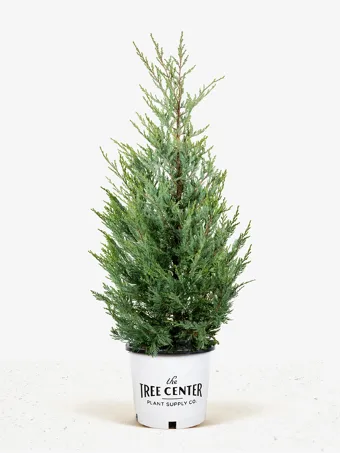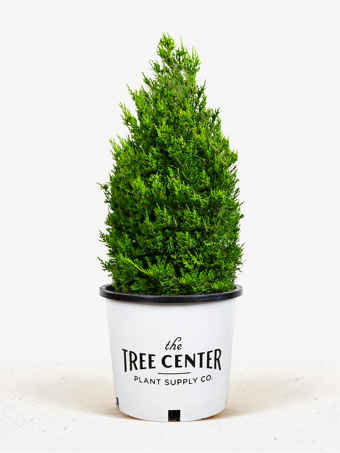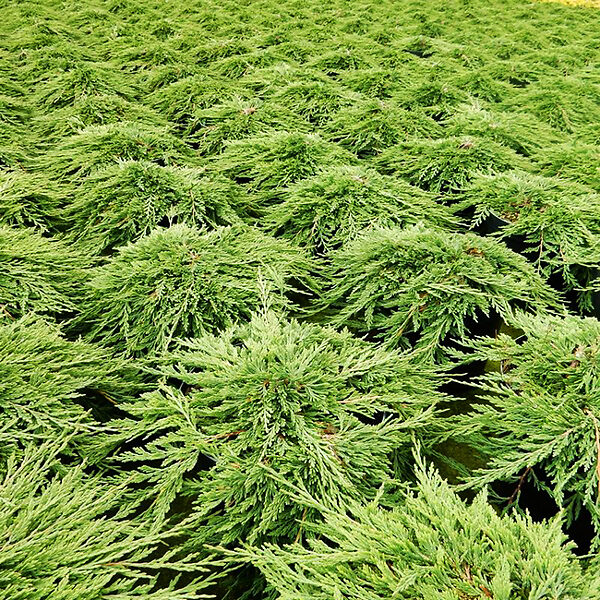
Pancake Juniper
Juniperus horizontalis PancakeView more from Juniper Trees
Pancake Juniper
Juniperus horizontalis Pancake
30 day - ARRIVE AND THRIVE™ guaranteeLearn more


Special Features

Botanical Name
Juniperus horizontalis Pancake
Outdoor Growing zone
3-9
Mature Height
0.25
Mature Width
2-5
Sun needs
Full Sun
The Pancake Juniper is the flattest evergreen on the planet, growing just 3 inches tall, and yet spreading out to 3 or even 5 feet across. The sparkling silver-blue leaves are scale-like, clinging to the stems. In cold areas they may turn purple in the winter. Grow it on flat surfaces or on slopes, where it prevents soil erosion. Plant it to spill over walls, or among rocks and gravel to follow the contours of the ground. Use it to soften the edges of hard surfaces. It grows well at the beach too, and it’s very drought resistant.
- The lowest spreading juniper in the world
- Flat mat of silver-blue evergreen foliage
- only 3 inches tall but several feet across
- Turns purple in cold winters
- Very resistant to drought, poor soil and salt-spray
Full sun is needed by the Pancake Juniper, to keep its foliage color and dense growth. Grow in any well-drained soil, including poor sandy soils, rocky ground, gravels, and poor urban conditions. Avoid wet soil and shaded areas as that encourages diseases to develop. Generally free of all pests and diseases when in suitable soil, it isn’t normally eaten by deer. It is resistant to salt spray and doesn’t need any trimming or special care.
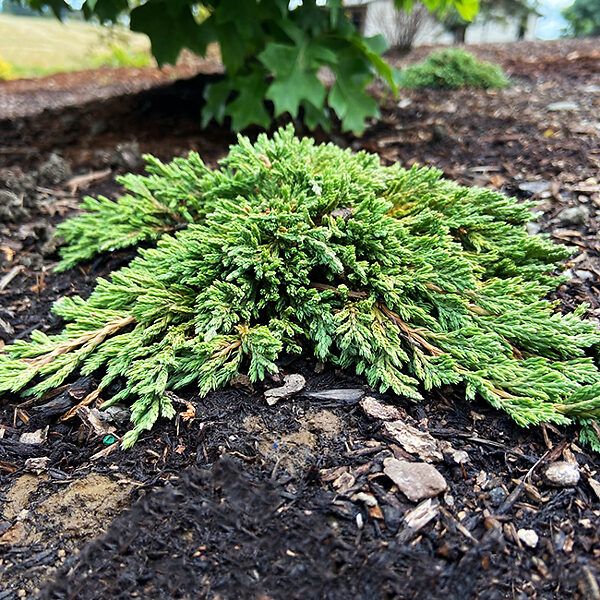
For many gardeners the ideal garden has no visible soil. Gardens full of green and color is the goal, and for that you need a diversity of plants. When you need a covering over the earth that is very low, or where you want to soften rocks, hard edges and retaining walls, we often don’t want any height – just cover. If you want to combine a level no higher than a lawn with toughness, durability and drought resistance, it’s time you discovered the Pancake Juniper. Flat as that breakfast treat, this is the lowest growing juniper in existence. It stays an incredible 3 inches tall, and spreads out into a dense mat 3 feet or more across. Creeping across any surface, climbing up rocks or cascading down walls, this great little evergreen is a tough as they come, and handsome too, with its bright silver-blue scaly leaves sparkling in the sunshine that it loves.
Growing the Pancake Juniper
Size and Appearance
The Pancake Juniper is a low, creeping evergreen conifer, that sends out radiating stems lying flat on the ground. These spread out in fan shapes, and weave together, making a solid covering over the ground. It rises just 2 or 3 inches in the air – the height of a lawn – but grows outwards up to 6 inches a year, covering an area several feet across. It continues to keep growing as long as it is alive, continuously expanding, but never getting any taller. The scale-like needles are small and triangular, clinging to the stems tightly, forming a dense covering. They are bright silvery blue – brightest and bluest when new, and remaining a silvery gray-green year round. In winter, especially in colder zones, it may develop purple tones. It is about half the height of the otherwise similar Blue Rug Juniper (‘Wiltonii’). Older plants may occasionally produce a few of the small, dark-blue, rounded berries typical of female juniper varieties.
Using the Pancake Juniper in Your Garden
An eye-catching feature anywhere, the Pancake Juniper is perfect for adding interest to boring flat areas, or covering slopes and banks, where it will reduce soil erosion. Grow it among rocks and boulders, where it will follow the contours of them. Plant it at the top of a wall to cascade down, clinging closely, or use it to cover unsightly, rocky areas of dry soil. Plant it in the front of beds against a wide path, driveway or patio to soften the straight outline. It is very resistant to salt-spray, so it’s a great choice for a beach cottage or coastal garden. To cover larger areas, plant in groups, spacing each plant about 2 feet apart. Within a few years you will have a continuous silver-blue mat.
Hardiness
Incredibly resistant to both heat and cold, the Pancake Juniper grows almost everywhere in the country, from chilly zone 3 to hot zone 9. It tolerates dry, desert atmospheres, and also hot and humid ones, as well as cold regions and exposed places.
Sun Exposure and Soil Conditions
Full sun is best for the Pancake Juniper. More than a very little shade will weaken it, reduce growth, and turn the blue colors more green. It will grow in any well-drained soil, and that includes dry, sandy soils, stony ground and gravel, and urban waste. In fact, it prefers those drier places to over-rich, moist soils, which can encourage foliage diseases, especially if the area is wet in winter. Established plants are very drought-resistant, although young plants should be watered regularly during the first year, if the ground is dry.
Maintenance and Pruning
Pests and diseases are very rare, and deer leave it alone too, so the Pancake Juniper is very easy to grow. It doesn’t need trimming, but if you want to reduce the spread, do this by removing individual stems, cutting back to just in front of an upward facing stem, to keep the natural look.
History and Origin of the Pancake Juniper
The creeping Juniper, Juniperus horizontalis, is native to northern parts of North America, growing wild from Alaska through Canada and the northern states into New England. It is literally growing from sea to sea. Wild plants vary in height, but can be up to 18 inches tall and 10 feet wide. There are several different forms grown in gardens, but none as low-growing as the Pancake Juniper. It was discovered in the 1990s by Bill Janssen, who owned Collectors’ Nursery in Battle Ground, Washington State. He specialized in rare plants of many different kinds, but has now ceased business.
Buying the Pancake Juniper at the Tree Center
Junipers present a special challenge to growers, who must select pieces to root that have the correct habit – in this case horizontal, not vertical. Our growers take great care to preserve the exact characteristics of the variety, and you can be sure your plant will indeed be ‘flat as a pancake. Order now, though, as this variety is hard to obtain, and always sells out fast.
